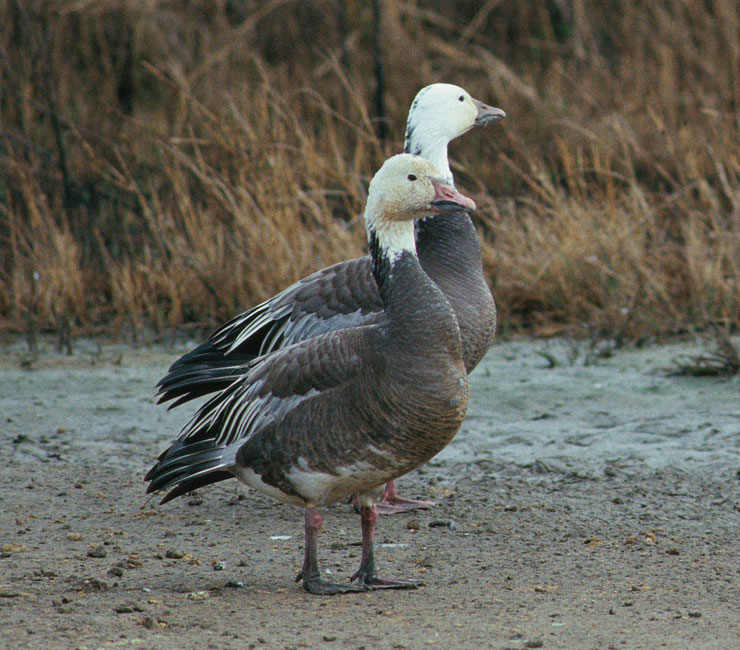Geese: Light Geese vs. Dark Geese
Rather than dive into the nuances of duck identification, we’ll focus on something a lot easier—goose identification.
In Colorado, your possession and bag limits for geese are split into light geese and dark geese.
- Light geese include lesser snow geese (including blue), greater snow geese, and Ross’s geese.


- Dark geese include Canada geese, white-fronted geese, brant geese, cackling geese, and all other species that don’t fall under light geese.


Snow geese and Ross’s geese are both entirely white in color with the exception of some black on the tail and wings. All of the dark geese have darker colored bodies that are gray, brown, and black. So essentially, if the goose is dark in color, it is a dark goose; if it is white in color, it is a light goose. The only tricky aspect of this is the blue variant of the snow goose.

These geese fall under the light goose category, although their bodies are dark in color. So, the best practice to tell the difference between a light goose and a dark goose is the head. Light geese have an entirely white head, dark geese do not. This blue variant of the snow goose is not as common as the typical coloration though. More often than not, the body coloration will help you with your identification, but the head coloration will help you be 100% sure of your target.
As stated earlier, identifying waterfowl in flight is difficult and takes a lot of practice. You’ve already learned that one of the main firearm rules is “Know your target and what is beyond.” If you are ever unsure what species you have in your sights, it is always better to pass on the shot than accidentally harvest the wrong animal.